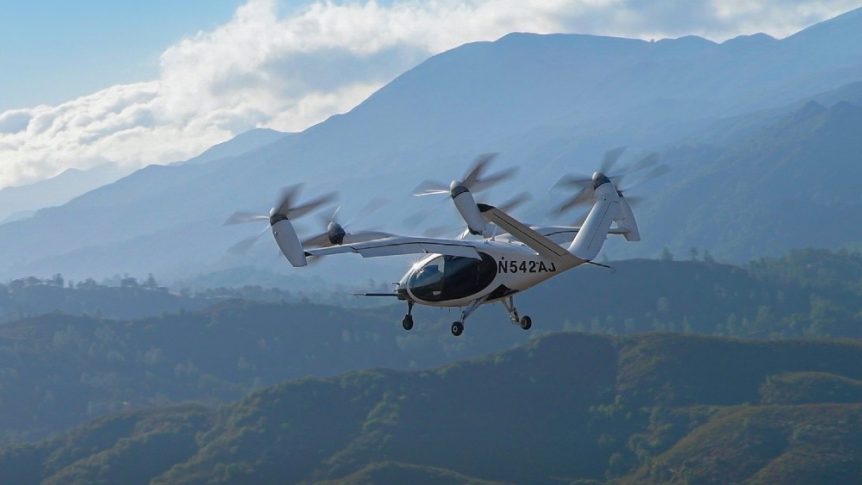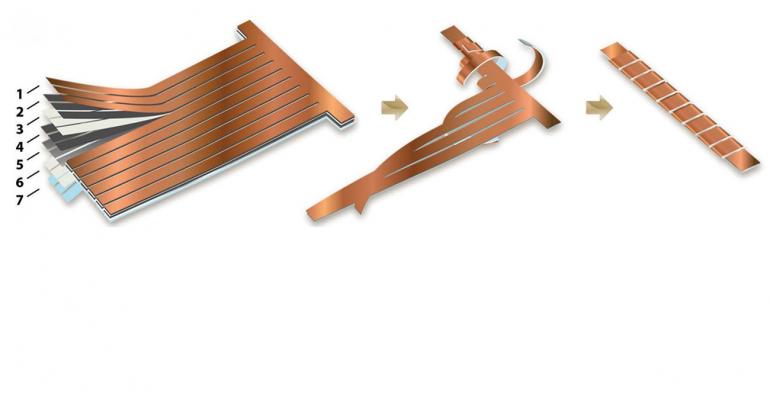Joby Aviation is one of few “unicorns” in the electric Vertical Take Off and Landing (eVTOL) market, a billion-dollar enterprise. With funding coming from Toyota, several venture capital investors, Uber and the U. S. Army, Joby seems poised to demonstrate Urban Air Mobility (UAM) in a serious way. In 2011 JoeBen Bevirt, founder of Joby Energy, Joby Aviation, and creator of those knobby-looking tripods you see everywhere, invited Patrick McLaughlin to visit his design studio. Your editor got to tag along. On Woodpecker Ridge, north of Santa Cruz, JoeBen’s barn-like studio housed about a dozen engineers and designers all working on electricity-generating kites. He wore a T-shirt reading, “If you’re not living on the edge, you’re taking up too much room.” That edginess has helped him, in the last decade to be a major player, with now over 500 employees in the aviation sector. JoeBen and Patrick discussed motor design and integration with a controller Patrick had built from off-the-shelf …
Get a Spine! Flexible, High-Density Energy Storage
The Vertebrate Battery “Prof. Yuan Yang of the engineering school at Columbia University (New York) modeled, designed, built, and fully evaluated a configuration that emulates the spine of vertebrates, while providing 85% of the energy density of a prismatic Li-ion cell with equivalent volume.” According to Power Electronics.com. Professor Yang’s 14-member team, working in the impressively-named Center for Precision Assembly of Superstratic and Superatomic Solids, and inspired by the flexibility of the human spine and its ability to repeatedly endure bending and twisting, designed a battery that emulates the characteristics of what is in essence a structural battery. We know from experience that our backbones can perform some pretty extraordinary twists and turns – witness the supple routines of gymnasts and Cirque de Soleil performers. Our spines are not rigid assemblies, but a complex construction of solid parts (vertebrae), flexible bits between the vertebrae (disks), and a network of wiring (nerves), which transmit signals from our organs and extremities to …
IBM’s 500 Mile Battery Progress
According to an article by Simon Fogg on the New Electronics UK web site, “In the early 1900s, electric vehicles were more common than their petrol powered counterparts – and so were steam powered versions, although these allegedly took 45minutes to start.” What we now think of as “alternative energy” vehicles were killed off when the self starter became a common feature on internal-combustion cars. The danger of breaking an arm while cranking the family automobile was gone, and women, who had been big proponents of the salon-like electrics of the day, turned to gasoline power to run errands. With two billion fossil fuel-powered cars pumping their exhausts into a beleaguered atmosphere, the question becomes not whether there will be enough gasoline in the future, but whether the future can survive a plentiful supply of such fuel. The CAFE Foundation’s April Electric Aircraft Symposium introduced IBM’s Battery 500 project, as directed by Dr. Winfried W. Wilcke, Manager of Nanoscale Science …
Dropping Into Madrid
Solar Impulse HB-SIA, flown by project CEO Andre Borschberg, crossed the border into Spain after flying over mountainous terrain for over 17 hours on the first leg of its Payerne, Madrid, Rabat trip. During the flight, the prototype crossed from Switzerland into France at an altitude of 3,600 meters (11,800 feet) The project’s blog explains, “The Solar Impulse airplane took-off this morning at 08h24AM (UTC+2) from Payerne aerodrome in Switzerland following the previously scheduled flight plan over the Pyrenees. The aircraft flew over the Massif Central towards the city of Toulouse (France), flying over the Pyrenees mountain range at an altitude of 7’833 meters (25,699 feet) and finally arriving in Spain, landing on Runway 33L.” The airplane managed the 1,191 kilometer (738 mile) voyage at an average ground speed of 89 kilometers per hour (55 mph) and reached a peak altitude of 8,500 meters (27,888 feet). (Patrick McLaughlin is a close friend who spoke at the sixth annual Electric Aircraft …
The Sixth Annual Electric Aircraft Symposium
The CAFE Foundation will hold its sixth Electric Aircraft Symposium on April 27 and 28, 2012 at the Flamingo Resort in Santa Rosa, California and at the Charles M. Schulz Sonoma County Airport, site of the Green Flight Challenge. Not only will there be a stellar lineup of speakers, but flying demonstrations of electric and hybrid aircraft, a first at any EAS. Jack Langelaan, team leader for the GFC-winning Electro Taurus G4 team, and Tine Tomazic from Pipistrel will share insights on the design and flight of the 403.5 epmpg aircraft. David Calley, Chief Technical Officer for Motor Excellence, will describe ideal low-RPM motors for electric aircraft, and Mark Moore from NASA’s Langley Research Center will share breakthroughs in distributed propulsion. And that’s all before the first coffee break! Typical of the packed schedules for all EAS’s, the rest of the presentations will fill your brain and lighten your spirit. Gene Sheehan will discuss his Quickie-like Feuling Green Flight Challenger …


